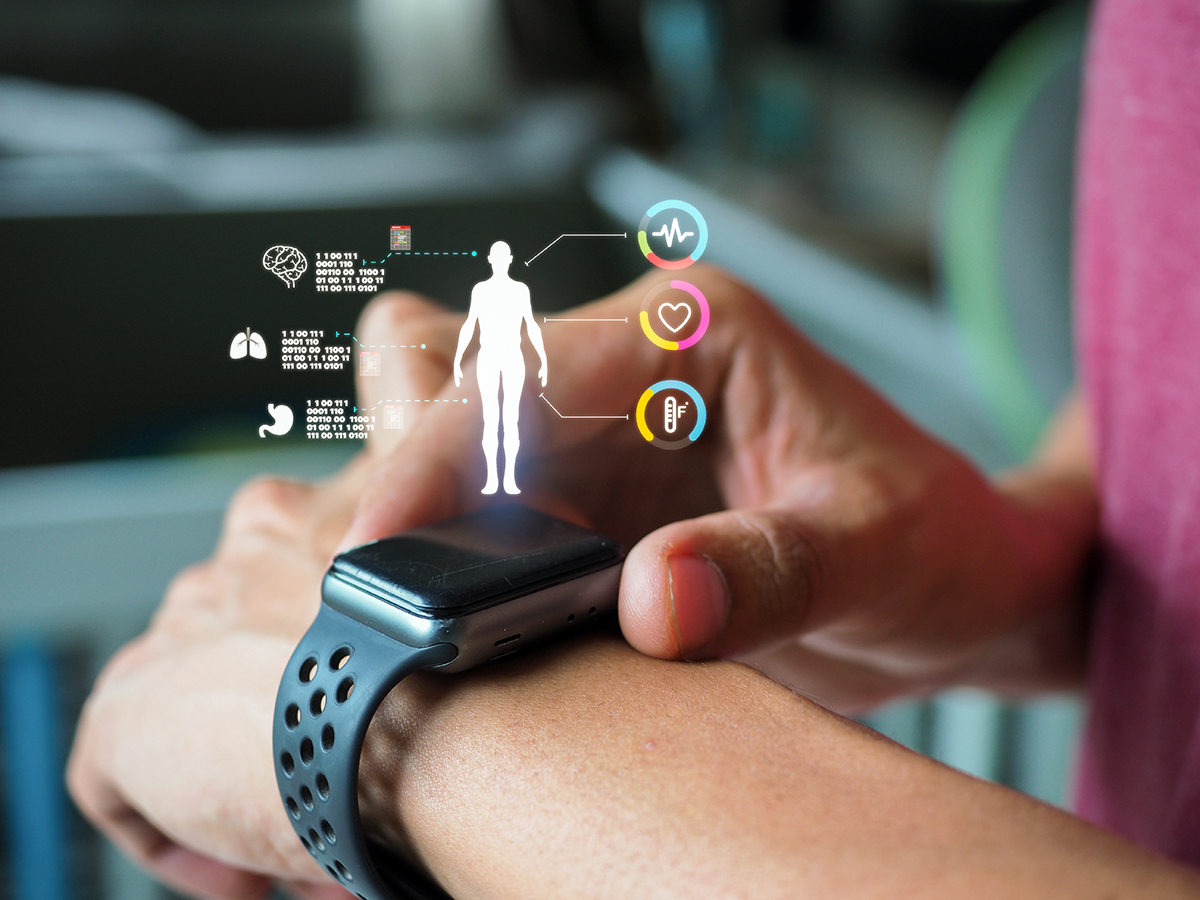
The Anatomy of Virtual Care

Propelled by the Covid-19 pandemic, the healthcare industry experienced the challenge of providing quality care to patients as social distancing measures were in effect. To overcome this obstacle, providers leaned heavily on virtual care. According to McKinsey, telehealth increased by a rate of 38x since Covid. To understand how well telehealth met the needs of individuals during the pandemic, a Telehealth Impact Physician Survey was conducted. Comprised of 1,594 respondents representing all regions of the country, approximately 80% of physicians agree that telehealth has improved the safety of their patients and improved the timeliness of care. It’s hard to dispute that virtual care, a component of telehealth, has changed the provider/patient experience, in many cases, for the better.
Shaped by technology, healthcare continues to evolve, and virtual care is a driving force behind this evolution. In addition to creating better relationships between healthcare providers and patients, virtual care has produced benefits unique to each group.
For healthcare providers:
- Doctors and care givers can better manage their own schedules, reducing their burdens and improving their work-life balance, as well as mental and physical health
- Virtual care helps to increase patient numbers as caregivers can provide for a larger client base
- Increased collaboration with colleagues helps to improve diagnostic value
- Improved efficiency because of the decreased number of patient no-shows
- Reduced office costs
For patients:
- Improved patient adherence; Patients take greater ownership over their own health leading to better health outcomes
- Care is efficient
- Patients have increased access to care, including specialists
- No commute times
- Less time waiting for appts.
- Cost-effective, eliminates unnecessary trips to the ER or hospital
A centralized virtual care system depends on the seamless interaction of three main components: people, process, and technology. Without synchrony in these areas, your virtual care strategy is unlikely to get off the ground.
Anatomy of Virtual Care
To create an efficient quality care model, the needs of patients and providers must be a priority along the virtual care journey. It’s a matter of bringing together best practices of in-person visits and parlaying these principles into a virtual setting.
- Pre-visit: Prior to the appointment, intelligent scheduling systems serve as the initial contact for those needing medical care. Based on the medical situation, these systems can recommend the appropriate course of action. Care seekers can be directed to book a direct call, schedule an appointment, or instructed about self-care. To ensure patients and physicians are prepared for the virtual visit, digital paperwork is completed, appointment reminders are sent, and vital lab or test results are shared.
- Virtual waiting room: While waiting, patients check-in for their appointments, are screened, normally given HIPAA information, and may be offered clinical videos to view.
- Virtual visit: Physicians and patients can connect by video, phone, or conversational UI. Due to the information collected during the patient on-boarding process, like patient history and body vitals, the attending physician will have the necessary information to make care-based decisions and recommend next steps.
- Post-visit: for a virtual care appointment to be considered successful, a follow-up system needs to be in place where patients can gain easy access to their information. They need to be able to acquire any necessary prescriptions and health care directives from their physicians. Providers can make this available through an app or on an alternate location in a digital healthcare portal. Billing and claims management is also integrated for patient ease.
- Remote monitoring: IoT-enabled devices have transformed remote patient monitoring (RPM) by enabling doctors to monitor, report, and analyze their patient’s chronic conditions from outside a healthcare facility. With RPM, patients can receive health coaching and even be alerted if their condition worsens through a critical alert system.
While virtual care has become a convenient and lucrative healthcare option, there are instances where an in-person visit cannot be negotiated. Those instances include but are not limited to:
- Appointments when patients need scans, blood tests, or x-rays
- Emergency appointments
- Surgeries
The Faces of Virtual Care
As the name suggests, virtual care relies heavily on technology. However, people will always be at the center of the experience. Navigating virtual care can be tricky for both patients and providers, but education helps to ensure the care plan remains on a positive course.
As most education for providers has been treating patients in-person, it’s important for them to adapt to digital systems for remote care. Providers need to adopt a “webside manner” so that patients feel comfortable during their appointments. Grasping new technologies, while understanding aspects of camera angles and lighting may not be easy for providers the first time around, but learning and adhering to new concepts enables their practices to find quick success in this new age of digital healthcare.
Healthcare providers also have a responsibility to educate patients:
- Patients need to understand benefits of telehealth
- Sharing digital content about telehealth helps educate patients on the process
- Providers need to keep information simple, avoiding medical jargon; Complexity can cloud the patients’ ability to grasp telehealth visit
- Patients must be informed about smartphones, computers, or equipment they will need to attend appointments
- Ample time must be allotted for each virtual care visit to allow time for patients to get answers to their questions
When people come together, virtual care can result in the following statistics:
- 84% of urban physicians assert virtual care enables quality care for chronic disease management
- 74% of patients admit they would be comfortable discussing their health with a clinician online or on the phone
- 26% of patients would change providers to experience a high-quality digital experience
- 85% of physicians suggest telehealth increases timeliness of care
Technology Enhancing Virtual Care
Wearable devices and AI-powered digital healthcare platforms help to improve health outcomes beyond virtual care. RPM allows providers to monitor vital patient metrics and receive critical health alerts should any of the stats fall outside of normal ranges. IoT devices allow physician’s access to patients without an appointment. These wearable devices allow healthcare providers to efficiently respond to emergencies before a patient’s condition deteriorates.
AI-based digital healthcare platforms also increase the capacity to deliver higher levels of services. In addition, healthcare and life science organizations leverage data for diagnostic, exploratory, predictive, and prescriptive needs. Not only does this help elevate care outcomes, but it also leads to higher operational efficiency. AI algorithms can analyze large amounts of data from patient records and medical literature to provide more accurate diagnoses and treatment recommendations, which can improve the quality of care. These platforms can also facilitate remote monitoring and virtual consultations, enabling healthcare providers to reach more patients regardless of their location.
AI-based digital healthcare platforms can help reduce healthcare costs by improving efficiency and reducing the need for unnecessary hospital visits. This can improve access to healthcare for underserved communities and reduce healthcare disparities. The use of generative AI-based digital healthcare platforms certainly provides the potential to revolutionize the healthcare industry by improving the quality of care, increasing efficiency, and expanding access to healthcare services.
Implementing Exceptional Virtual Care to Enhance the Provider-Patient Experience
The face of healthcare is forever transformed thanks to virtual care. While the patient-provider relationship remains the same, the infrastructure and accessibility of modern healthcare is practically unrecognizable from traditional healthcare. The anatomy of doctor’s visit has been altered to accommodate a digital environment while technology like RPM, wearable devices, and AI-powered digital healthcare platforms help make virtual and continuous care possible. Education is the key to unlocking the abundant benefits of virtual care for both patients and providers. Once that learning curve is overcome, implementing a quality care model with a consistent process ensures that just as healthcare is carried out in a brick-and-mortar healthcare facility, quality care can be delivered virtually.
Digital technologies continue to impact the healthcare industry, helping to create positive patient-provider experiences while improving operational efficiencies and lowering costs. Apexon has led the design, development, and delivery of multiple digital healthcare solutions. Check out how Apexon’s healthcare services digitize the patient-provider experience or get in touch with us directly using the form below.
This blog was cowritten by Dr. Jagadisan Suresh and Dr. Atif Farid Mohammad




